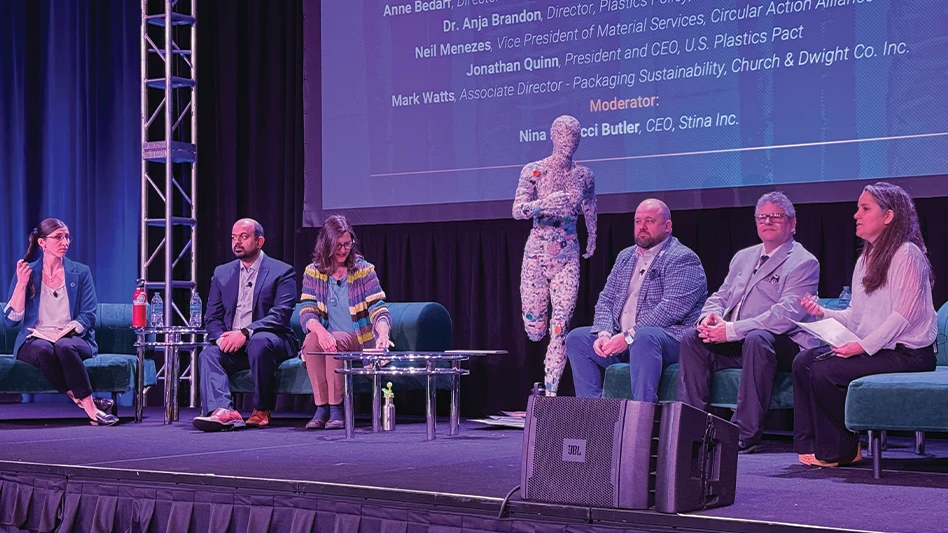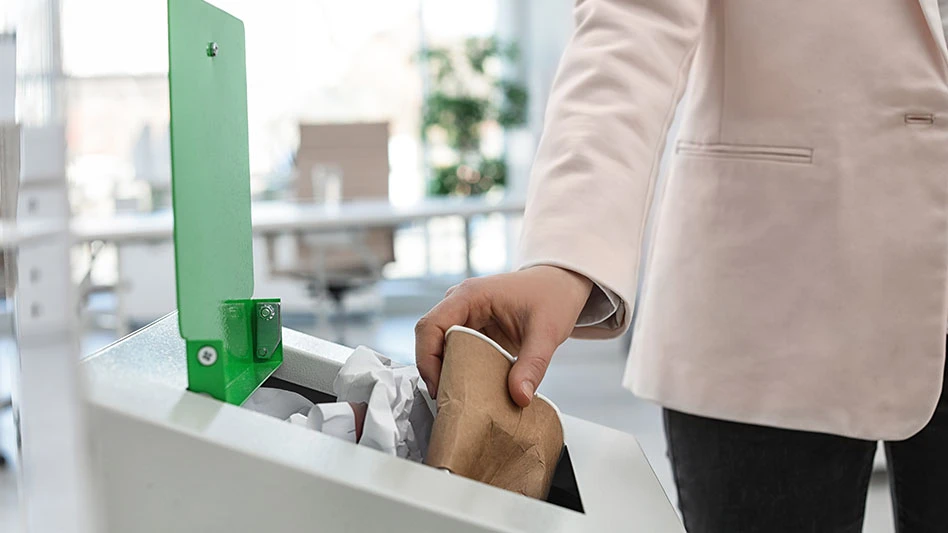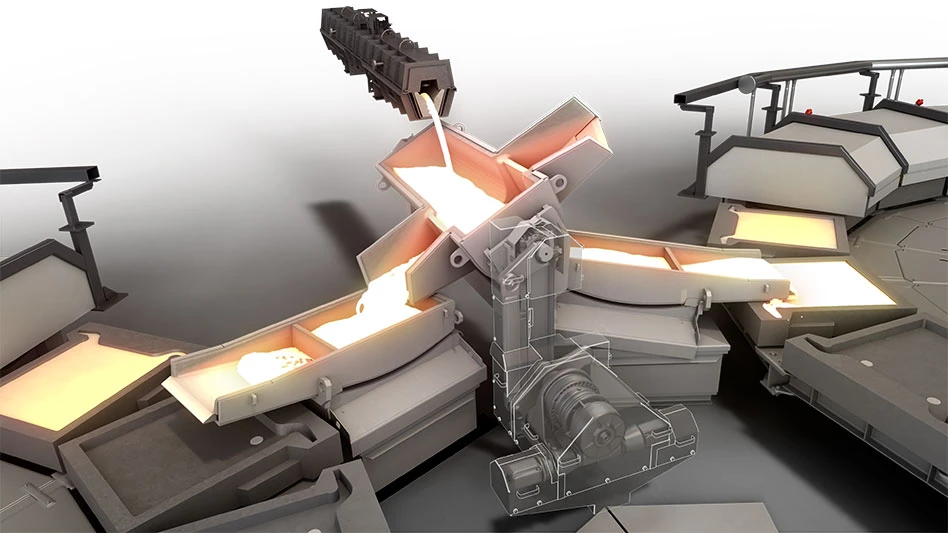Europe has led the way in requiring the electronics industry to collect and recycle its growing amount of end-of-life products. While several countries have already established mandatory recycling, the Waste Electrical and Electronic Equipment Directive (WEEE) will become effective in every EU Member State in 2005, followed by required collection targets in 2006. The U.S. is not too far behind. At last count, some 39 electronics waste bills were being developed in 11 U.S. states. While many are focused on leaded-glass-containing computer monitors and TVs, some states like New Jersey have specifically targeted cellular telephones. The implication for all electronics products is becoming increasingly clear: recycling of consumer electronics goods will be a growing business.
Within the U.S. the recycling industry, dedicated electronics treatment facilities are rapidly developing, as covered regularly in this publication. A recent report by the International Association of Electronics Recyclers (www.IAER.org) states that more than 1.5 billion pounds of electronic equipment were processed last year in the U.S.A. This is significant because from the perspective of many original equipment manufacturers (OEMs), learning how to manage end-of-life treatment is relatively new.
The purpose of this article is to provide a brief assessment of how the recycling issues and opportunities might be viewed from the perspective of an OEM making portable devices. These goods are typically made up of a printed circuit board (PCB) and one or more thermoplastic and/or metal enclosures. You can verify that this is very popular design strategy if you look around your home, office, or even in your pocket. The challenges involved in recycling electronics goods are distinctly different than the proven methods for processing of paper, consumer plastics, aluminum or steel. Treating the glass from TV or computer monitors is a distinct specialty that is developing but will not be discussed here.
Before recycling at the material level is initiated, reuse may be one option to extend the product lifetime and keep if from become waste in the first place. There is generally more economic value- and less environmental impact, depending on the energy efficiency of the older product if it is kept operating- if the product can be reused at a high level of functionality rather than being reduced to components or raw materials. Programs like Call to Protect and Donate A Phone® (http://www.motorola.com/content/0,,128-293,00.html) accept unwanted cell phones and put them into service by needy individuals. This may or not be within the domain of a given recycler. In fact, reuse is not generally considered recycling at all, but may become an entry point to recycling once the products are obsolete or no longer functional.
If product reuse is not applicable, the second best approach is to reuse internal components. This might include functional assemblies like power supplies or memory storage devices. Upgradeable equipment makes use this principle by retaining the basic equipment and exchanging only parts as required. The remaining non-reuseable material would then enter the material recycling flow. While there had been a peak in memory chip recovery, this industry is not too active now. Besides, the OEM may have definite restrictions on aftermarket resale of used components.
Materials with the most limited abundance and highest economic value will drive the materials recycling process. A decision point on the recycling process will likely be based on the content of precious metals including gold, palladium and silver, while copper is likely to be the dominant metal. It has been fortunate for the OEM that there is considerable compatibility between PCB’s and existing metal smelting operations. Recovery efficiencies the copper and precious metals are typically found to be greater than 90 percent. Some have considered the higher valued PCBs to be a feedstock that is as good or better than mined ore. Table 1 shows typical amounts of metals of interest in PCBs. Use of precious metals is required in some critical components and circuits, and palladium or silver may be used in some applications. While increasing the precious metal content would certainly favor recycling, practically speaking, cost limitations in the design will nonetheless keep their use to a minimum.
|
Polymer, glass reinforcement, & ceramics |
70% |
|
Copper |
16% |
|
Solder (tin/lead) |
4% |
|
Iron |
3% |
|
Nickel |
2% |
|
Silver |
0.05% |
|
Gold |
0.03% |
|
Palladium |
0.01% Sponsored Content Redefining Wire Processing StandardsIn nonferrous wire and cable processing, SWEED balances proven performance with ongoing innovation. From standard systems to tailored solutions, we focus on efficient recovery and practical design. By continually refining our equipment and introducing new technology, we quietly shape the industry—one advancement at a time. Sponsored Content Redefining Wire Processing StandardsIn nonferrous wire and cable processing, SWEED balances proven performance with ongoing innovation. From standard systems to tailored solutions, we focus on efficient recovery and practical design. By continually refining our equipment and introducing new technology, we quietly shape the industry—one advancement at a time. Sponsored Content Redefining Wire Processing StandardsIn nonferrous wire and cable processing, SWEED balances proven performance with ongoing innovation. From standard systems to tailored solutions, we focus on efficient recovery and practical design. By continually refining our equipment and introducing new technology, we quietly shape the industry—one advancement at a time. Sponsored Content Redefining Wire Processing StandardsIn nonferrous wire and cable processing, SWEED balances proven performance with ongoing innovation. From standard systems to tailored solutions, we focus on efficient recovery and practical design. By continually refining our equipment and introducing new technology, we quietly shape the industry—one advancement at a time. Sponsored Content Redefining Wire Processing StandardsIn nonferrous wire and cable processing, SWEED balances proven performance with ongoing innovation. From standard systems to tailored solutions, we focus on efficient recovery and practical design. By continually refining our equipment and introducing new technology, we quietly shape the industry—one advancement at a time. |
Data from Drs. Martin Goosey and Rod Kellner, “A Scoping Study- End-of-Life Printed Circuit Boards.” Dept. of Trade and Industry, U.K. (www.cfsd.org.uk/seeba/seeba_reports.htm)
One of the main issues in PCB recycling is pretreatment. While the organic materials can be incinerated and reduced to ash before smelting to refine the metals, this leaves the majority of the low-valued ash, glass filler and ceramics from components to be treated as solid waste. New technical approaches are being developed to liberate these different fractions without incineration. These include novel uses of progressive shredding and size reduction, in some cases employing shear-force acceleration to separate composites, followed by sorting based on density and electrostatics/electromagnetics.
Today the maximum amount of material that is recyclable from epoxy-glass PCB assemblies is limited to the dominant and recoverable precious metals, which may be only 20 percent to 30 percent. From a product design perspective, different ways of increasing the overall recycling efficiency- defined as the mass of material recycled divided by incoming mass of product, has been identified through design-for-environment software. One solution is that for a given design, increased use of some non-PCB material that is highly recyclable, such as housings made of a single type of thermoplastic, or better yet, a metal alloy, can raise the overall recovery rate of the product. In other words, to offset the low recyclability of a PCB, use of more recyclable material outside of the PCB can increase the overall amount of product that can be recycled. An example of a relatively recyclable product we have found is a desktop battery charger with a small circuit board but a relatively heavy housing. However, the OEM cannot make this happen in many designs that must meet strict size and weight targets. Further, this work was done to prepare strategies for the recycling targets that will be required by Europe’s WEEE Directive, and will be difficult to meet while bringing only marginal environmental benefits. This is because the environmental and economic results of recycling plastics from small products only bring diminishing returns. Industry hopes to avoid in any strictly mass-based recycling targets in the U.S.A.
One possible solution to increase the recyclability of PCBs beyond just metals is to not only use the available separation technology but develop economically viable markets for filler materials based on epoxy, ceramic, and glass fiber mixtures. The remaining incompatible metals must be separable from each other. Iron is not compatible with copper but can be removed after size reduction by magnetic separation. Aluminum is not compatible with either copper or iron but can be removed after size reduction by eddy current techniques. These types of treatments can be assisted by assemblies having some design freedom to keep different metals easily separable and avoiding adhesive or thermosonic welding processes. However, for most PCB assemblies, there are no practical alternatives to soldering components in place. This means that some type of treatment by the recycler is an absolute requirement, until some future date when R&D delivers a next-generation set of materials to replace conventional boards, components, and solders. Once again, the OEM is fortunate that separation technologies have been well-developed by the recycling industry.
Recycling of engineering thermoplastics is enabled by high volume streams of a single resin type, preferably of known resin manufacturer, with known physical properties such as Izod impact strength, uncontaminated by other materials such as other resin types, decorative finishes, adhesives, paper labels, and metal inserts. Resin color may be of secondary importance since mixed colors can generally be blended to gray then turned black. Volume is a key issue. If one assumes, in the case of cell phones, that there are some 400 million units sold per year, and assuming that as many as 100 million could be collected for recycling, and that each contained 50 grams of plastic housings, then there would be 5 million kg (just 2.3 million pounds) of thermoplastic to process per year from this source. Clearly, pooling with other feedstocks would be required for ongoing processing and recycling to be viable.
There have been some successes as well as ongoing problems in making thermoplastic recycling more successful. Some of the companies reporting progress have participated in the Stakeholder Dialogue on Recycling Engineering Thermoplastics from Used Electronic Equipment http://www.electronicsrecycling.org/stakeholder.
What would equipment manufacturers like to have from recyclers?
- First, it is a given that all regulatory agency as well as and company-specific requirements be strictly followed. Nothing will stop a business relationship faster than failing to honor certificates of destruction or having an environmental compliance issue.
- Secondly, integrity in the sampling and accounting procedures is a must. OEM’s are not in the dark any more on the content of their products. Data is being developed to track the content of products according to established specifications. One example of such a substance disclosure can be found at http://www.motorola.com/EHS/environment/supplier/w18.pdf .
- Finally, ongoing feedback on recycling results is needed. If feedstock and recycling process are not well matched, the result will be inefficiency and expense. Loss of resources to landfill should be avoided, and if it can be reduced through research in more recyclable electronic component and PCB material sets, or through inventing better recycling processes, it is a win-win for the OEM and recycler, as well as the environment. As we enter a new area of closed-loop product stewardship it appears that this can and will happen.
Get curated news on YOUR industry.
Enter your email to receive our newsletters.
Latest from Recycling Today
- Fenix Parts acquires Assured Auto Parts
- PTR appoints new VP of independent hauler sales
- Updated: Grede to close Alabama foundry
- Leadpoint VP of recycling retires
- Study looks at potential impact of chemical recycling on global plastic pollution
- Foreign Pollution Fee Act addresses unfair trade practices of nonmarket economies
- GFL opens new MRF in Edmonton, Alberta
- MTM Critical Metals secures supply agreement with Dynamic Lifecycle Innovations






